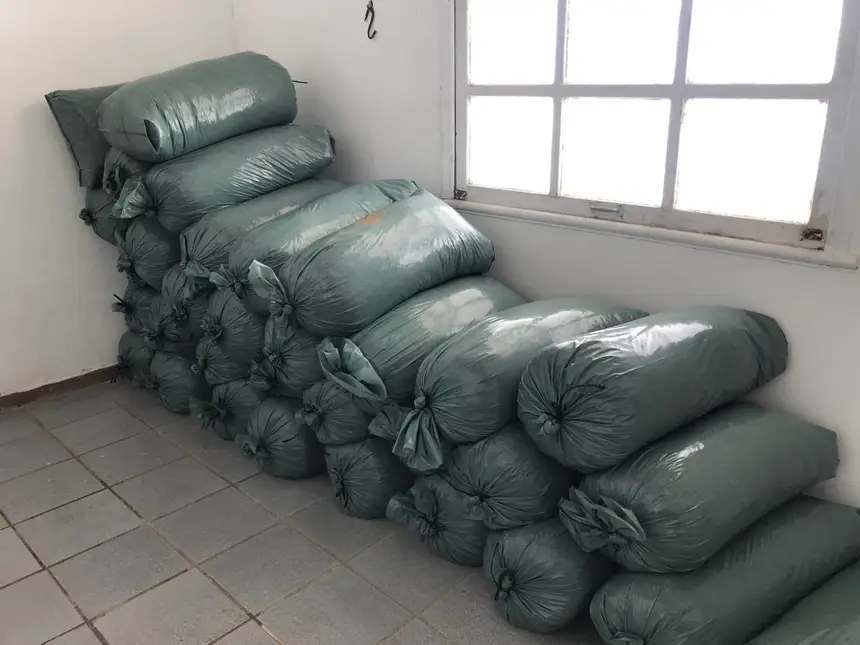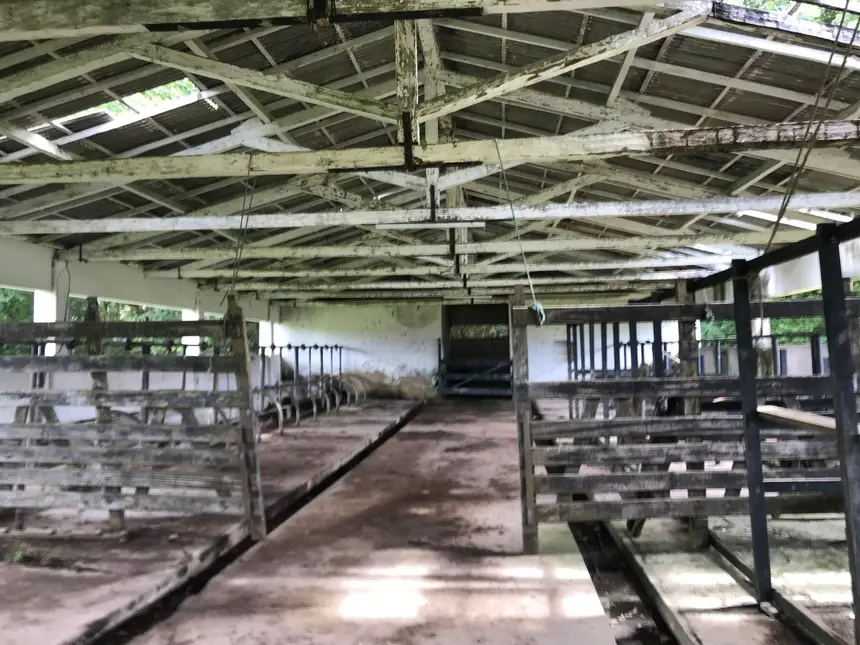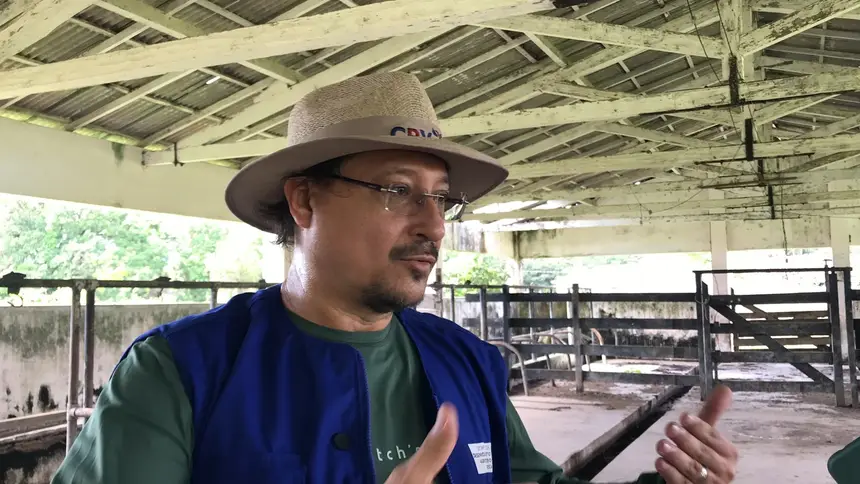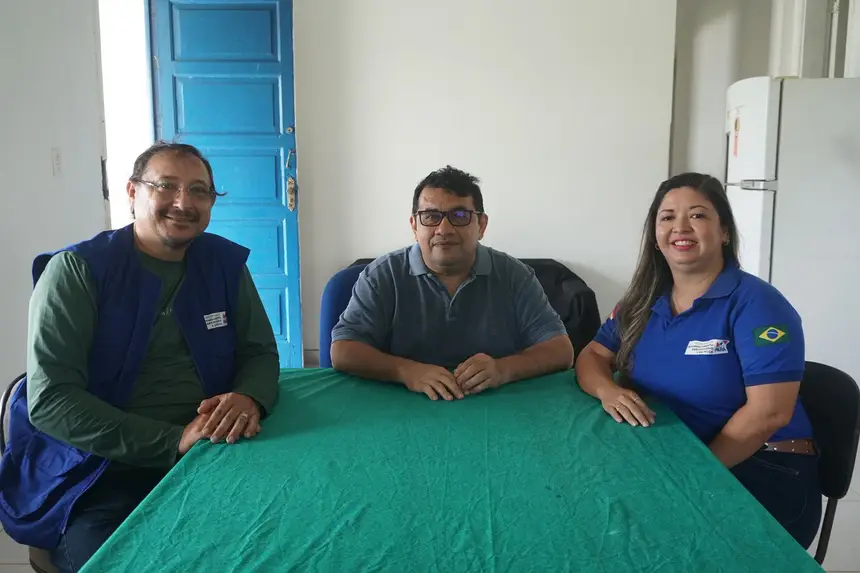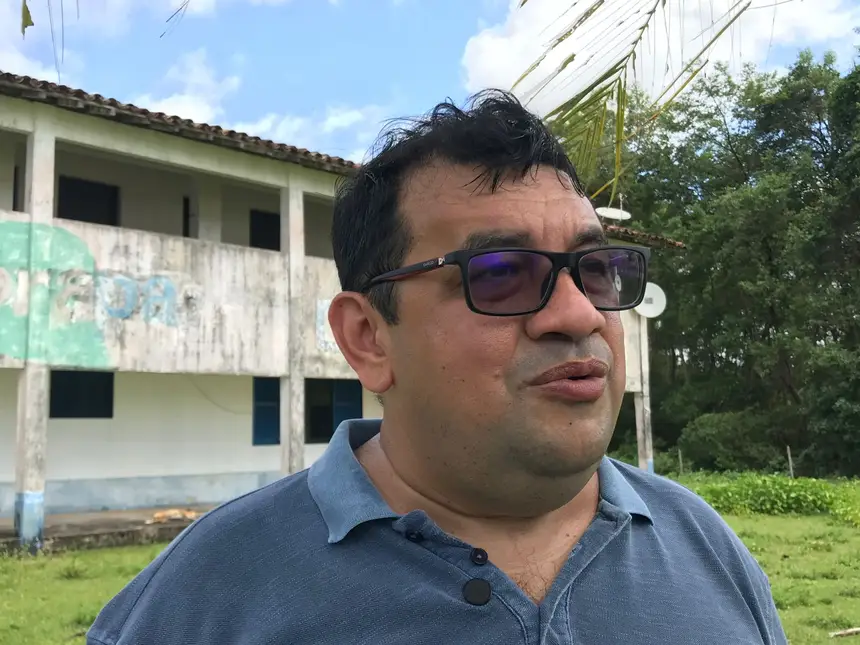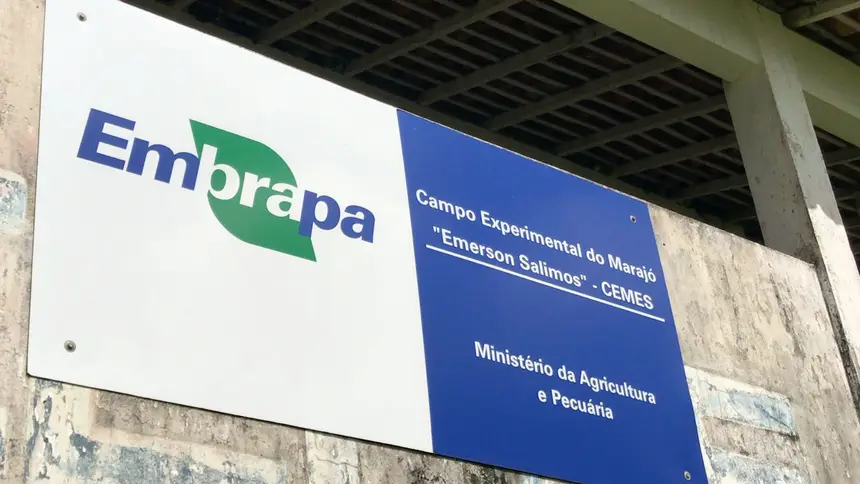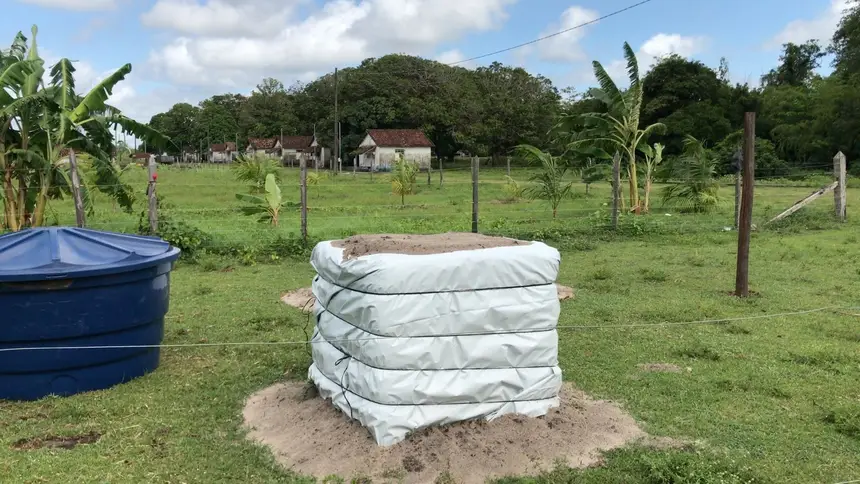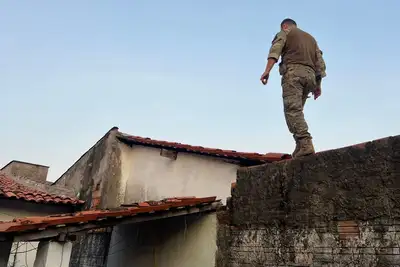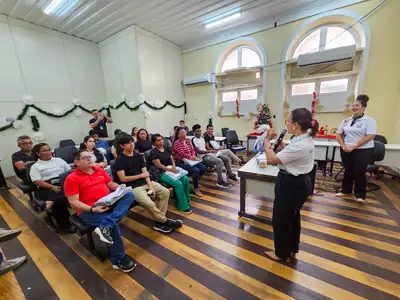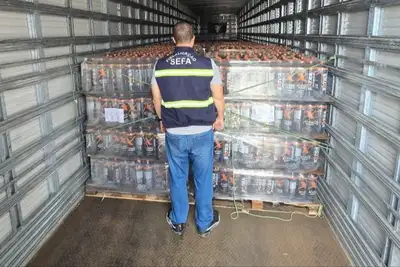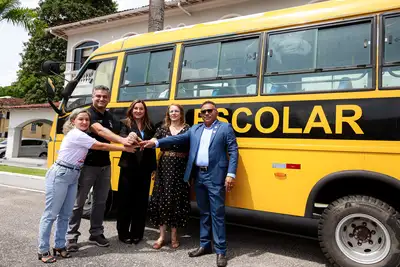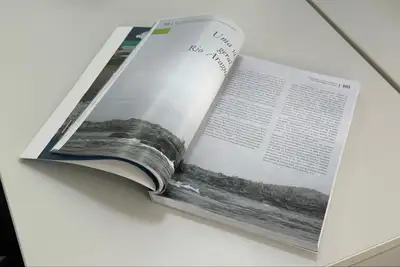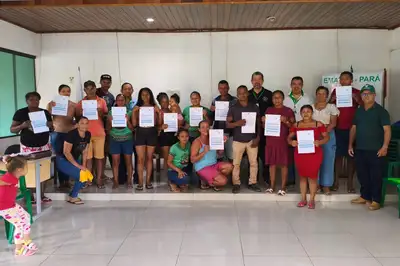Sedap and Embrapa Align Partnership to Benefit Small Cattle Farmers in Marajó
At the end of a week of programming, the technical team from the Secretariat visited the experimental area of the federal research institution
Technicians from the State Secretariat for Agricultural Development and Fisheries (Sedap) visited, on the morning of this Friday (4), the unit of the Brazilian Agricultural Research Corporation (Embrapa Eastern Amazon), in the municipality of Salvaterra, in the Marajó Archipelago. The purpose was to learn about the work developed by the federal agency and align a future partnership to ensure access to the institution's services in the Marajó unit, in order to generate benefits for small producers in the region.
The Experimental Field "Emerson Salimos" (Cemes), located in the Paraíso locality, on the banks of the Paracauari River, is a research and development center for sustainable technologies and practices for Marajó, with an emphasis on livestock production, especially buffalo, and conservation of natural resources.
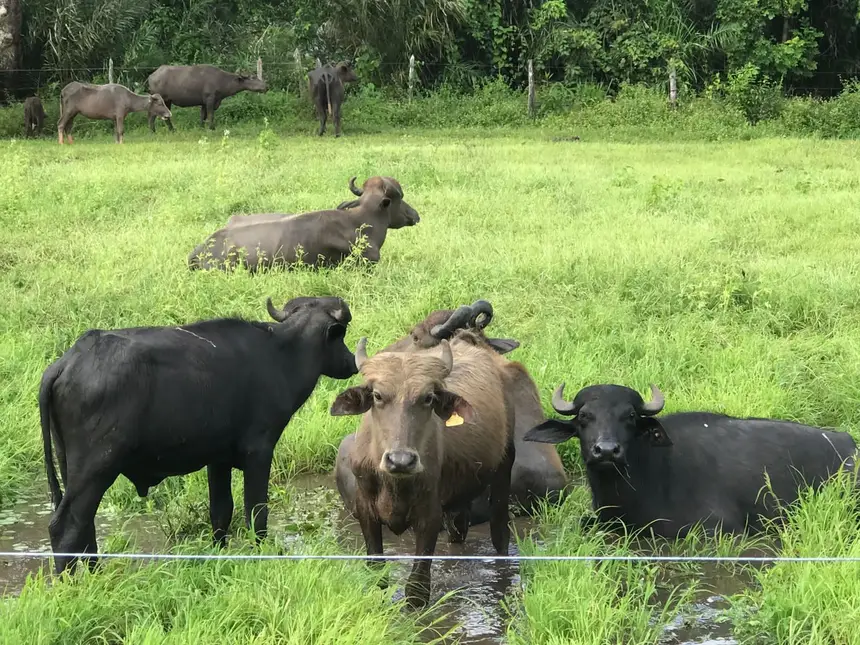
During the visit, the Sedap team – which had been in Marajó since the beginning of the week accompanying the 4th edition of the Cachoeira do Arari Milk Tournament and the 10th Marajó Buffalo Tournament, and meeting with farmers and buffalo breeders – was supported by the coordinator of the experimental field, Marivaldo Rodrigues Figueiró, a veterinarian and analyst at Embrapa.
From Sedap, veterinarians Anelise Ramos and Augusto Peralta, technicians assigned to the Animal Production Coordination (Copan), participated. The team learned about the structure and the work developed on site. The Embrapa field, Marivaldo Figueiró informed, has 2,300 hectares and is located 16 kilometers from the municipal seat of Salvaterra. The area is not being fully utilized, he said, as the aim is to concentrate activities in smaller areas that can serve as models for high production.
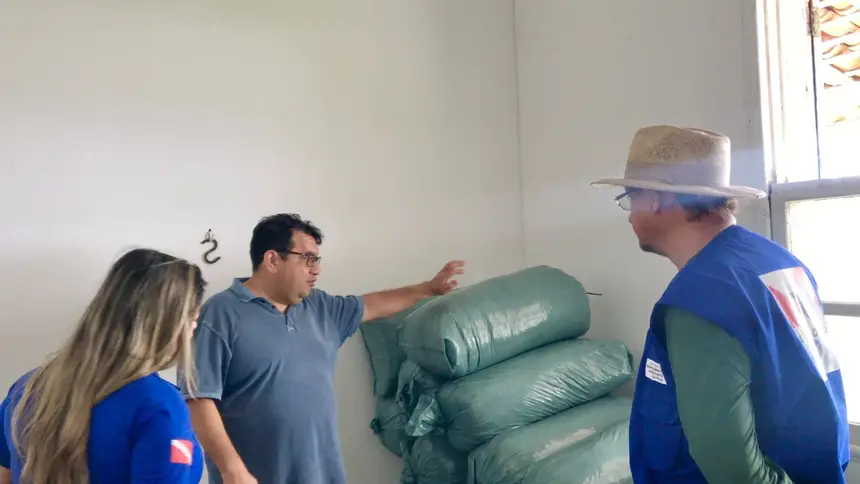
The team visited an old barn, where work was done only with beef cattle. In the future, Augusto Peralta added, the space should be reactivated, as a result of the partnership being established between Sedap and Embrapa, for the development of the dairy buffalo chain. "It is only fair that a technology provided by Embrapa serves as an open gate for them. The State views this type of technology supply positively. Facilities that bring small producers means and mechanisms for their sustenance," he emphasized.
The partnership with Sedap and other institutions, Marivaldo Figueiró noted, meets the need for improving the buffalo production system in Marajó, especially for milk production. "The aim, together with partners, is to boost this production, so that there is greater production, with more quality, and consequently, we can achieve the development of the region through buffalo farming," he informed.
All technologies generated for the area, Marivaldo Figueiró said, should be offered to buffalo production systems, through the training of producers. The aim is to extend these benefits to the residents of the 16 quilombola areas in the locality.
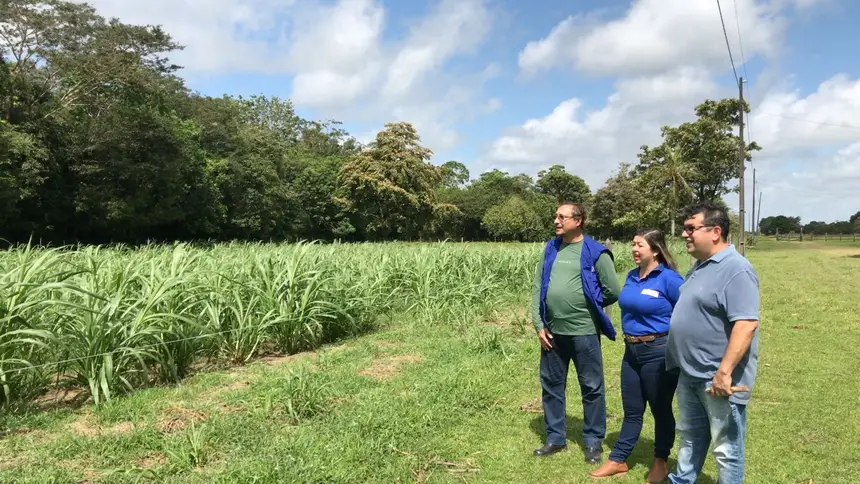
Course - The Embrapa coordinator presented to the Sedap team the space where a course for producers was held, whose grass was planted by the farmers themselves. The purpose was to guide them in producing silage - food conservation for the period of greater scarcity.
"This will generate satisfactory results, and the producers who participated in this work took seedlings to their properties and are replicating this technology, and will certainly have good results. The course was conducted in two modules: first they planted and learned to manage the capim-açu grass, and then they produced it, with the participation of 23 producers," added the coordinator.
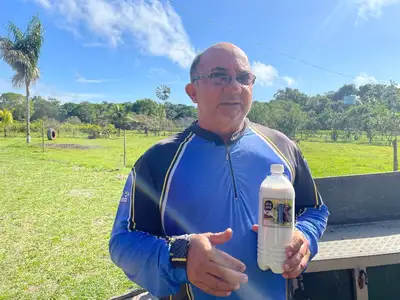
Model - The knowledge is already being put into practice by the owner of Sítio Taperebá, Joelson Fernandes, a breeder of the Murrah breed of buffalo, known for milk production. Owner of 50 animals, the small cattle farmer has 20 females, one male, and calves born two years ago. The property has 139 hectares, with 50 hectares of forest under environmental preservation, located at KM-40 of the access road to Camará, in Salvaterra.
The main activity developed on the site is dairy buffalo farming. The production is between 900 to 1,000 liters of milk per month, supplying the product to entrepreneurs, mainly sales points in Camará, in addition to supplying one of the dairies in Soure. Over two days, Joelson Fernandes participated in a course held at the Embrapa experimental unit, which provides assistance to the producer, on two hectares, guidance on the production and use of grass - from the mombaça and curumim species. In addition to Embrapa, the National Rural Learning System (Senar) supervises the assistance.
"We are fostering a way out for the drought, and we are mobilizing to have food for our animals in the summer. We are working on making silage, for which we received technical support. We made the silo in a bag, with a partnership also from the unions of Salvaterra and Cachoeira do Arari, through the president of the Pará Buffalo Breeders Association, João Rocha, who owns Fazenda Paraíso," said the producer, who learned how to produce and store grass to ensure the animals' feeding.
According to Joelson Fernandes, "we are pleased that the state government has remembered the small breeder and sent us this knowledge through Sedap. We are being assisted by the three levels of government: state, federal, and municipal."
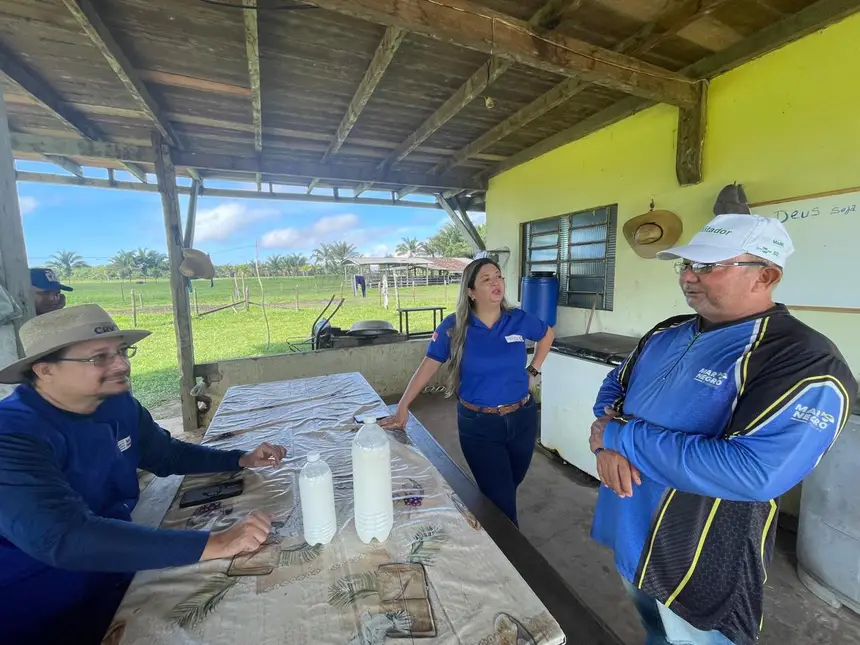
Production – Veterinarian Anelise Ramos said that the producer had previously received technical support from the Secretariat and was guided regarding investments in animal nutrition and forage, in grazing, and in IATF (Fixed Time Artificial Insemination), with the aim of making the animals produce more milk.
"We found, on this new visit to his property, that he invested in better animals, in paddocks, which are separate areas for animals, and with the state's incentives, this production will only increase," she concluded.


